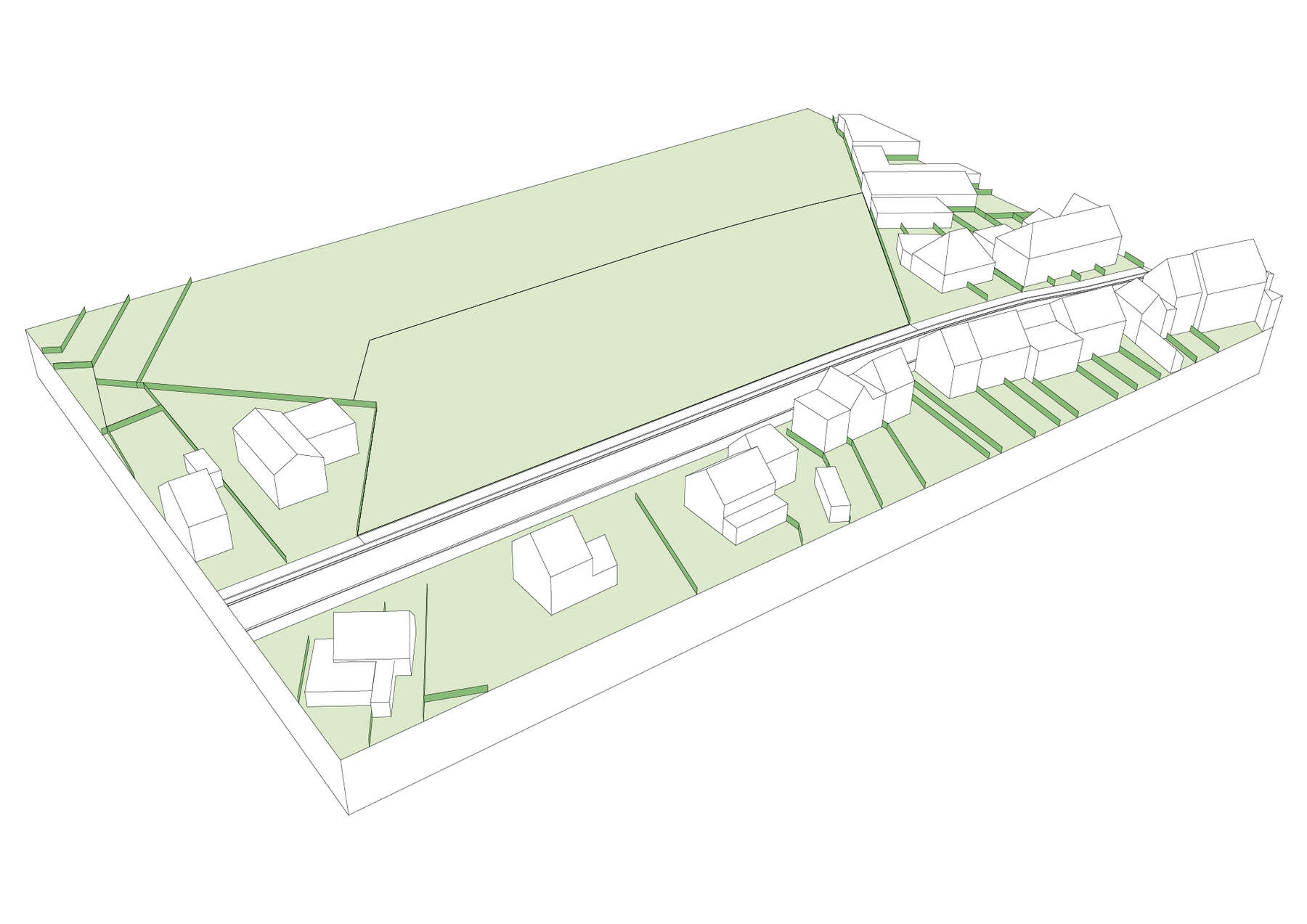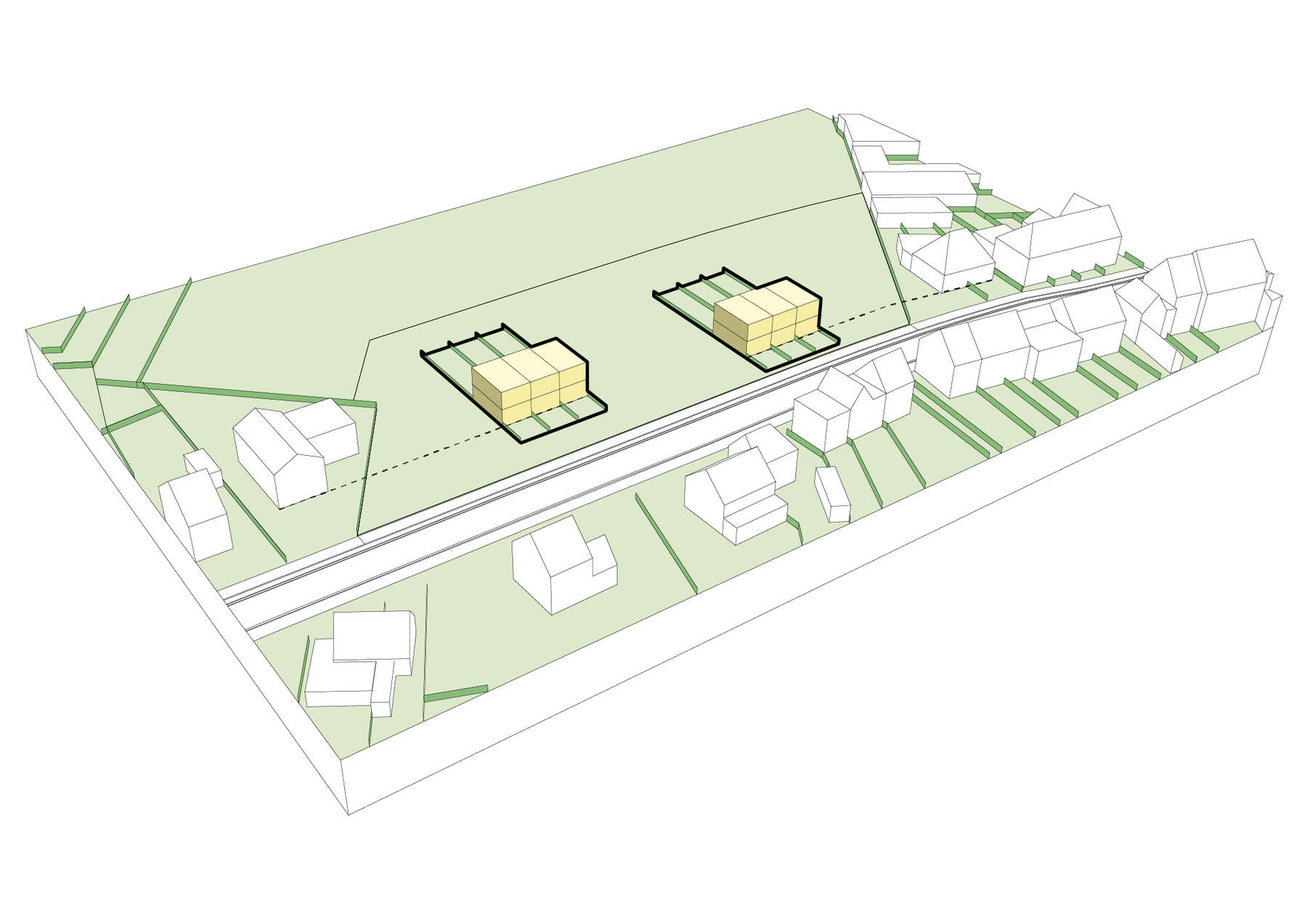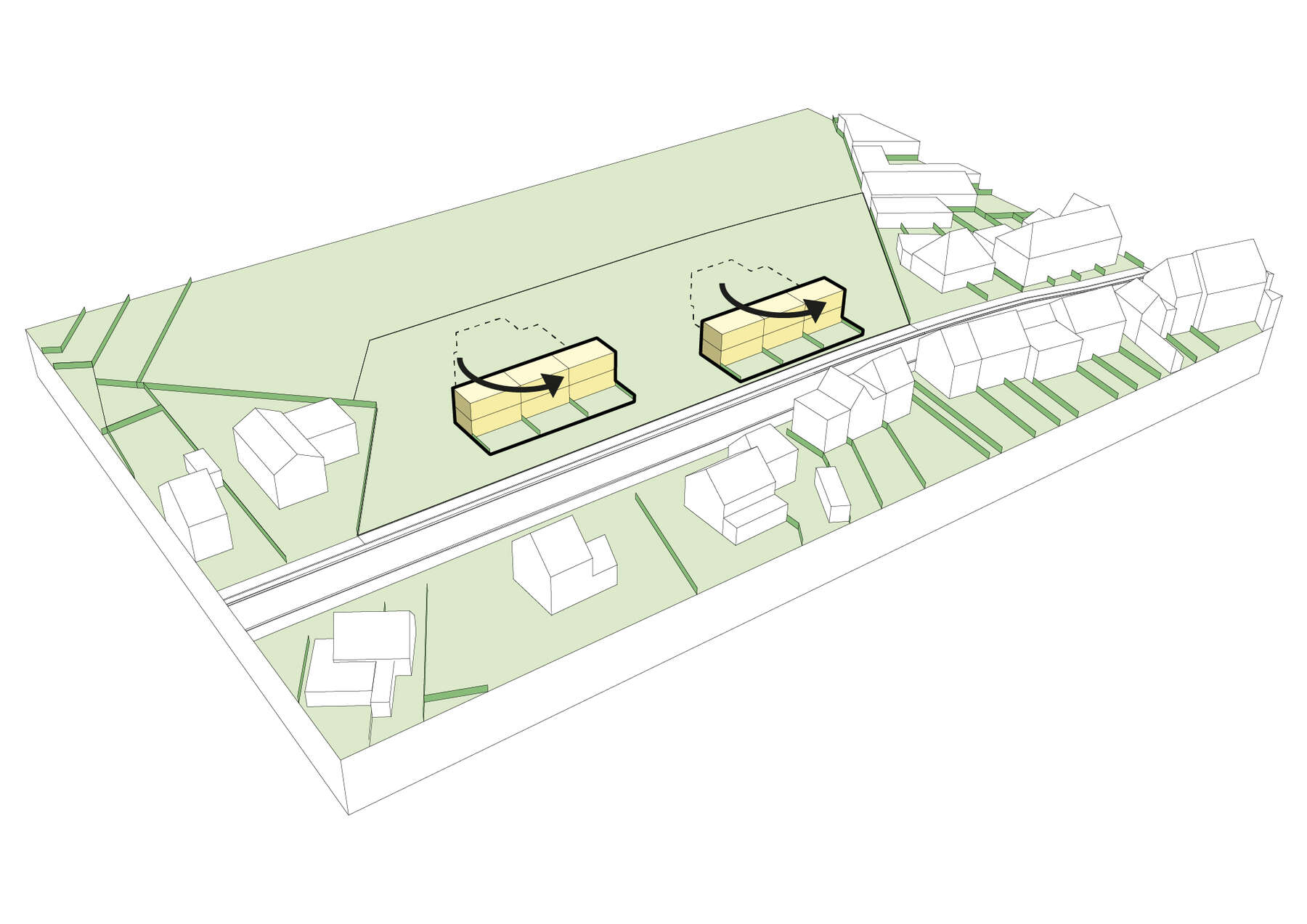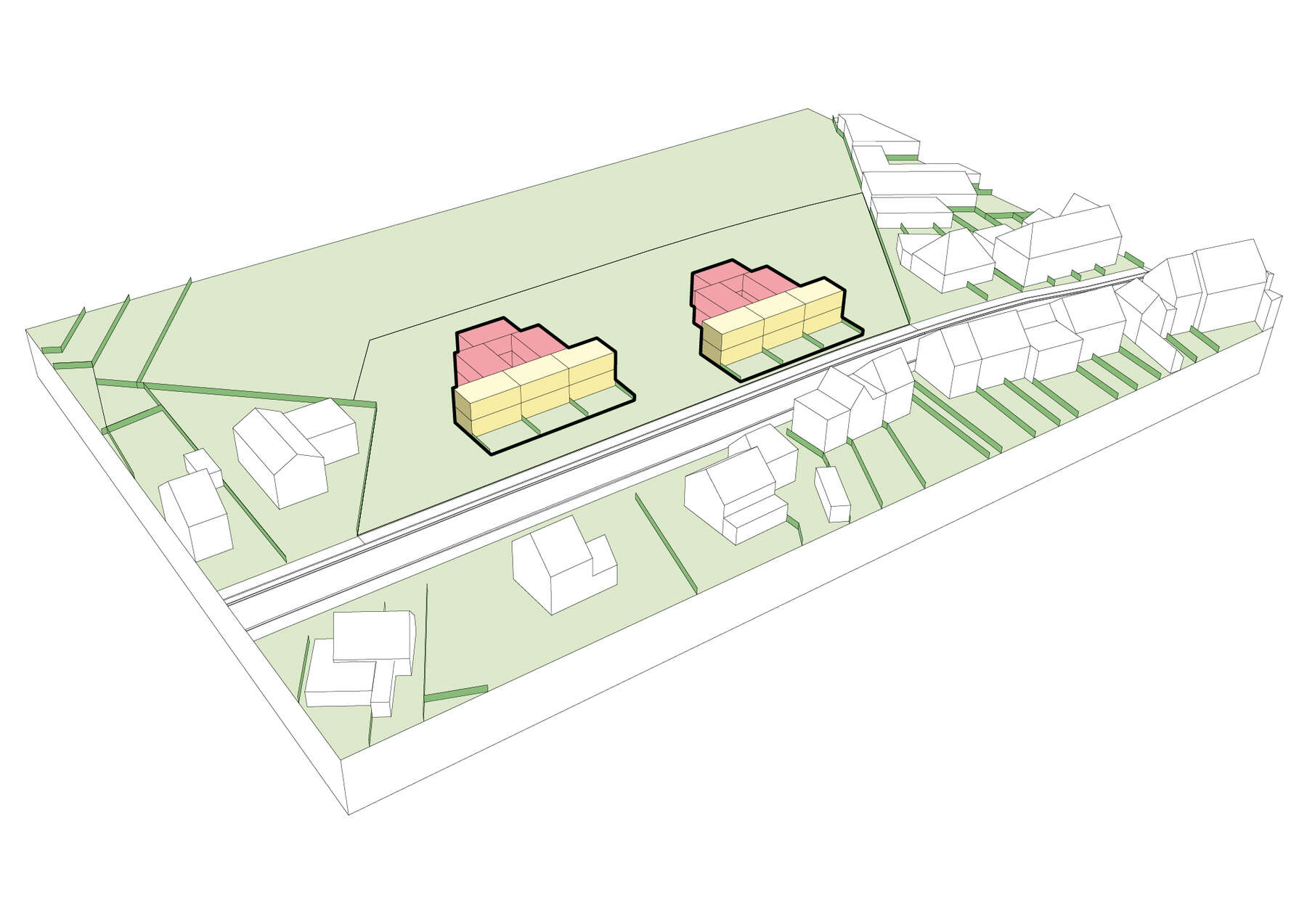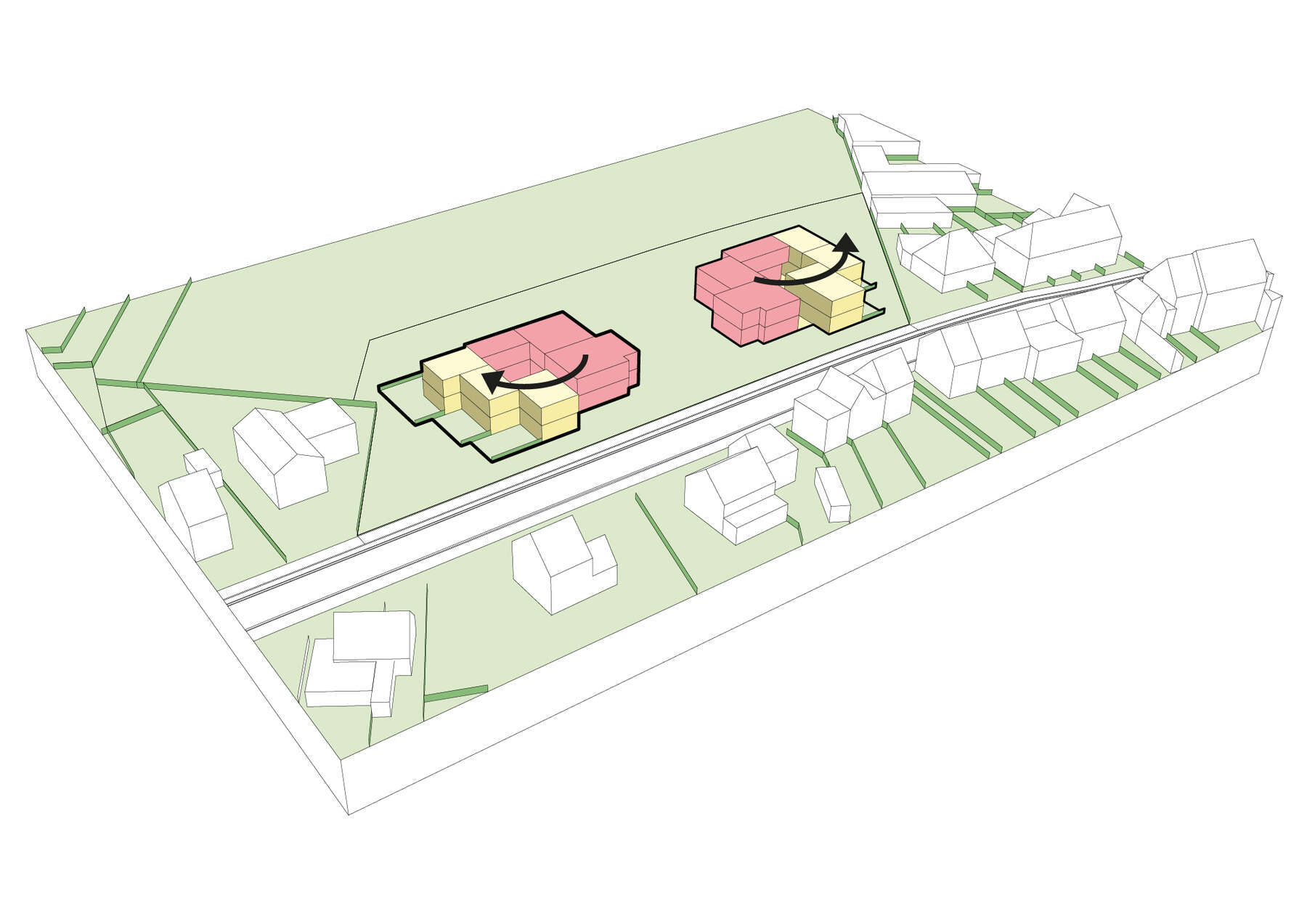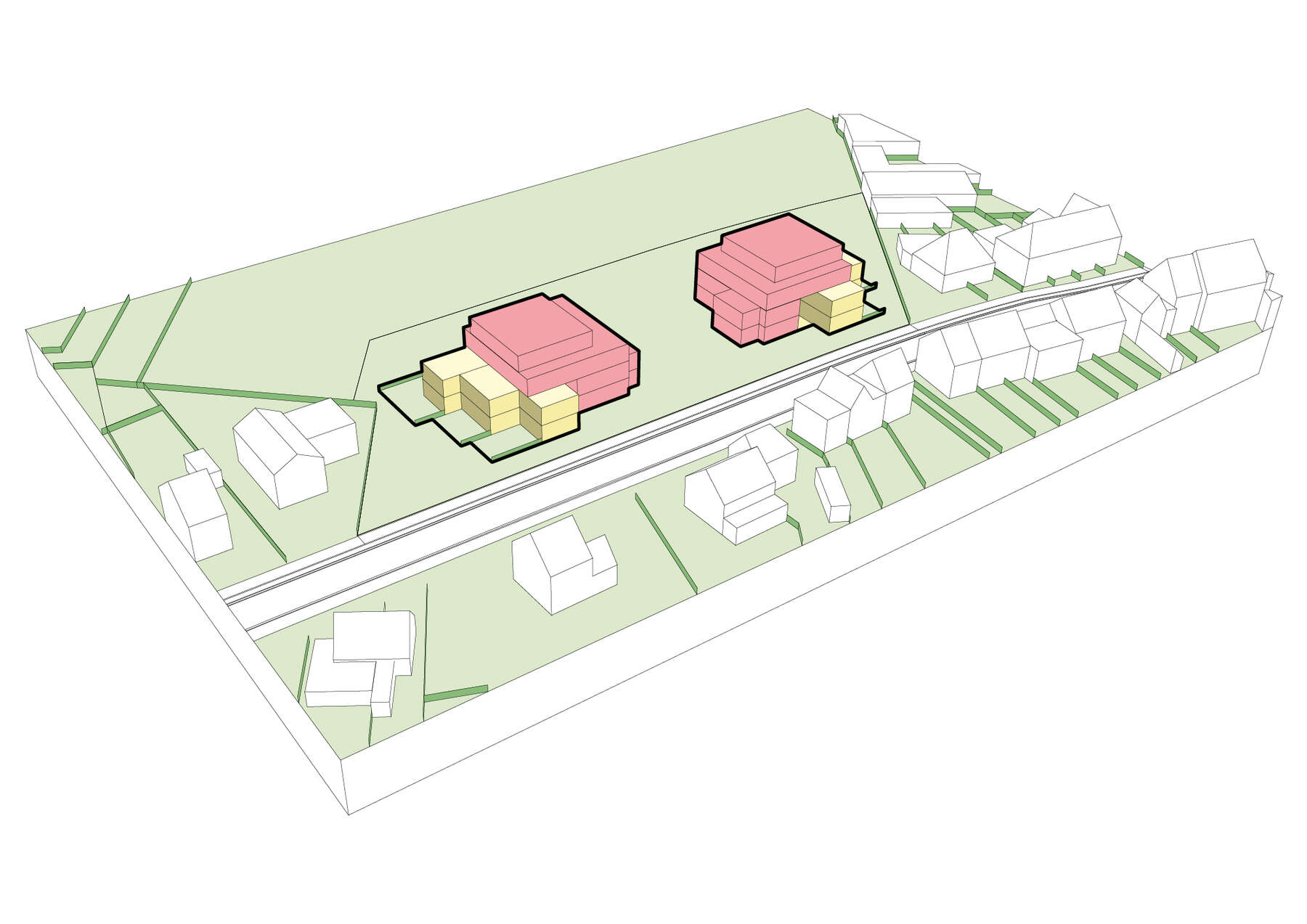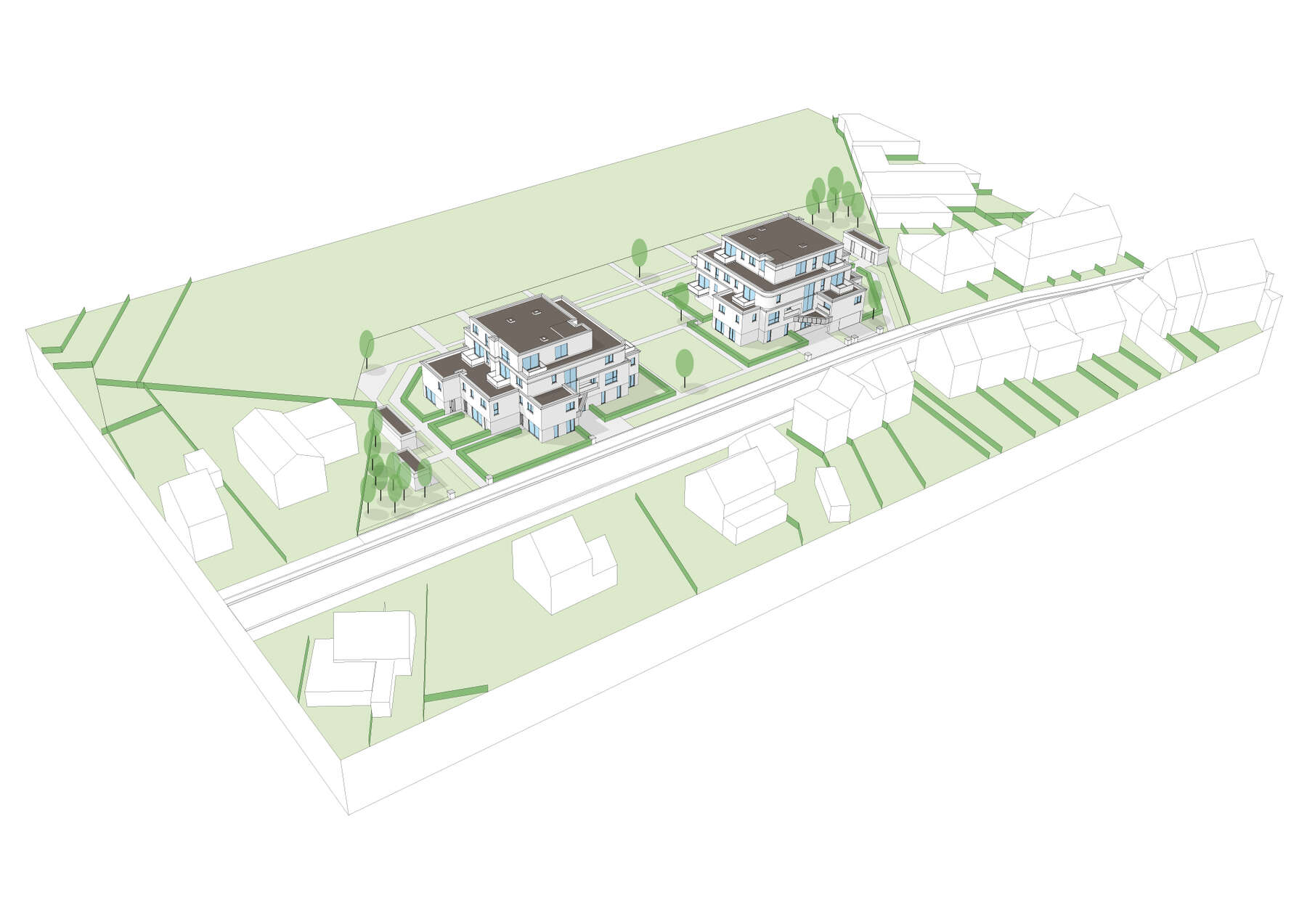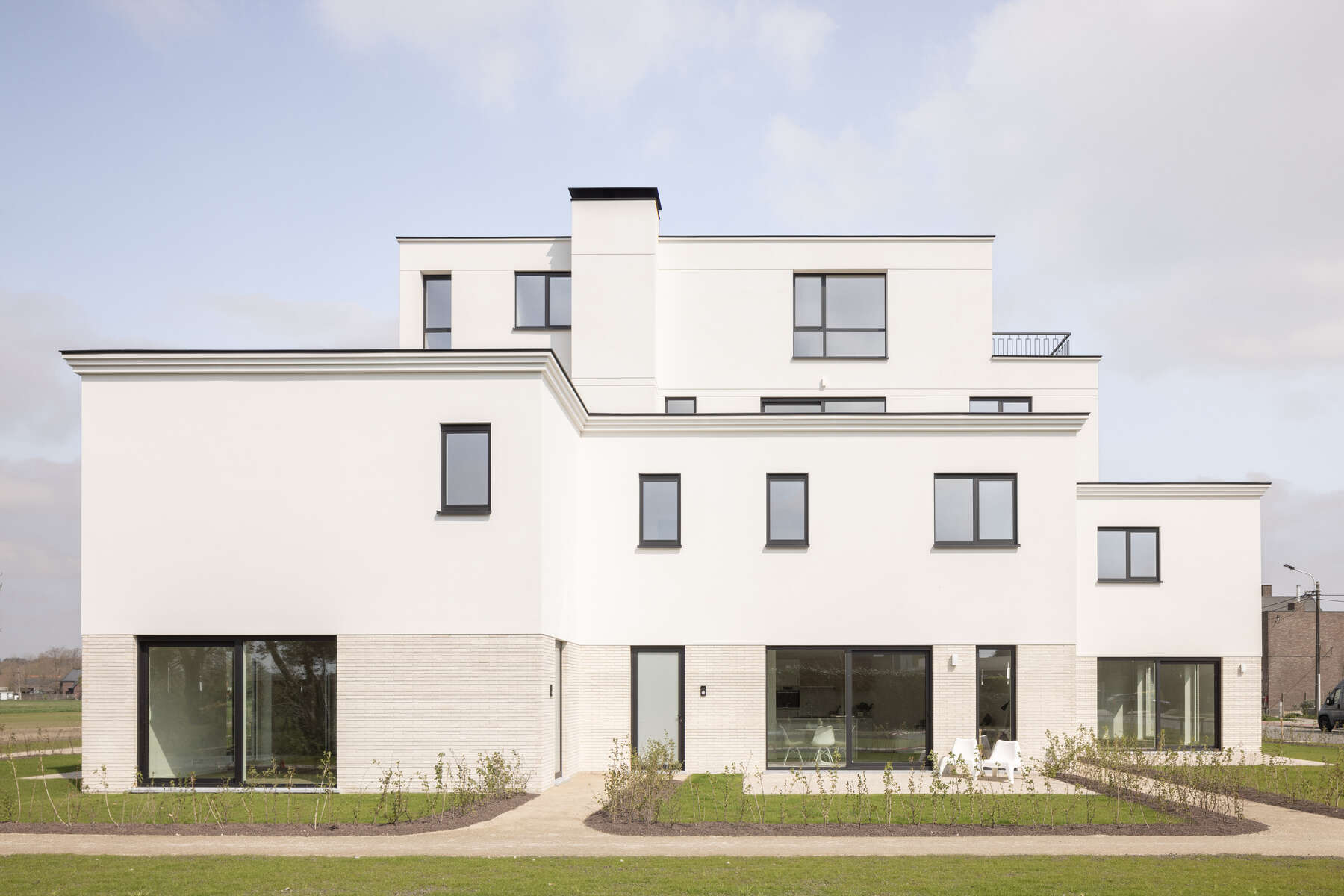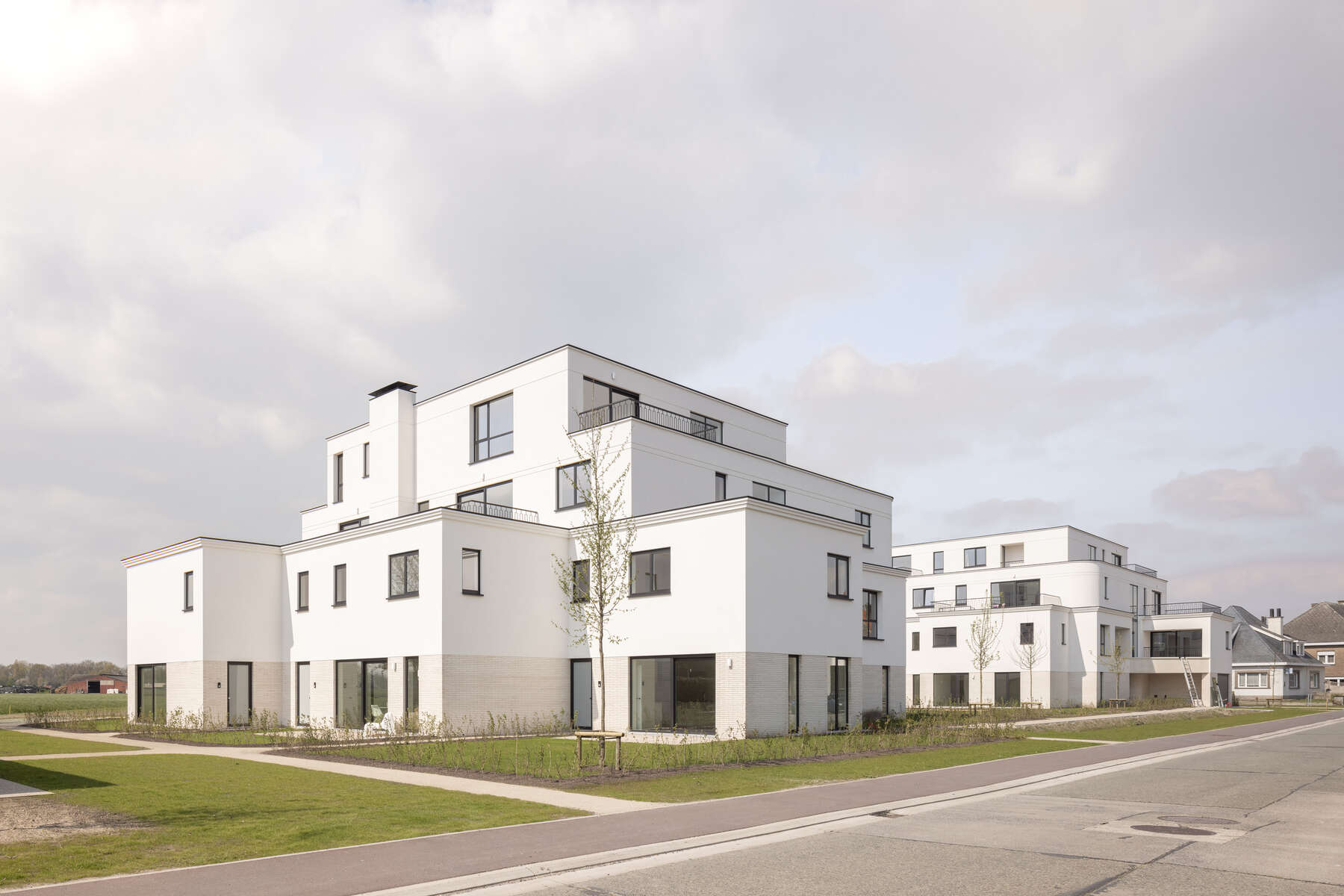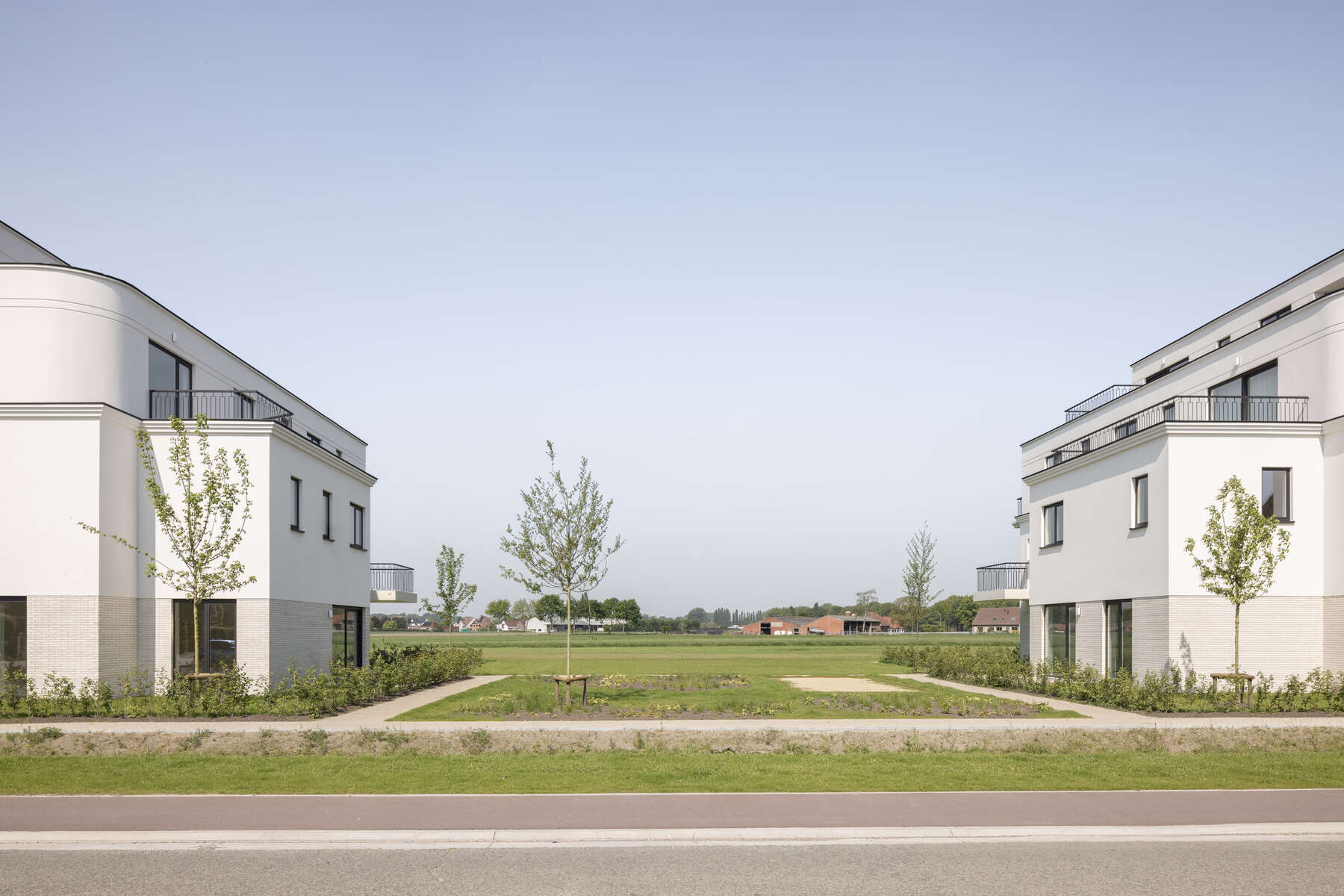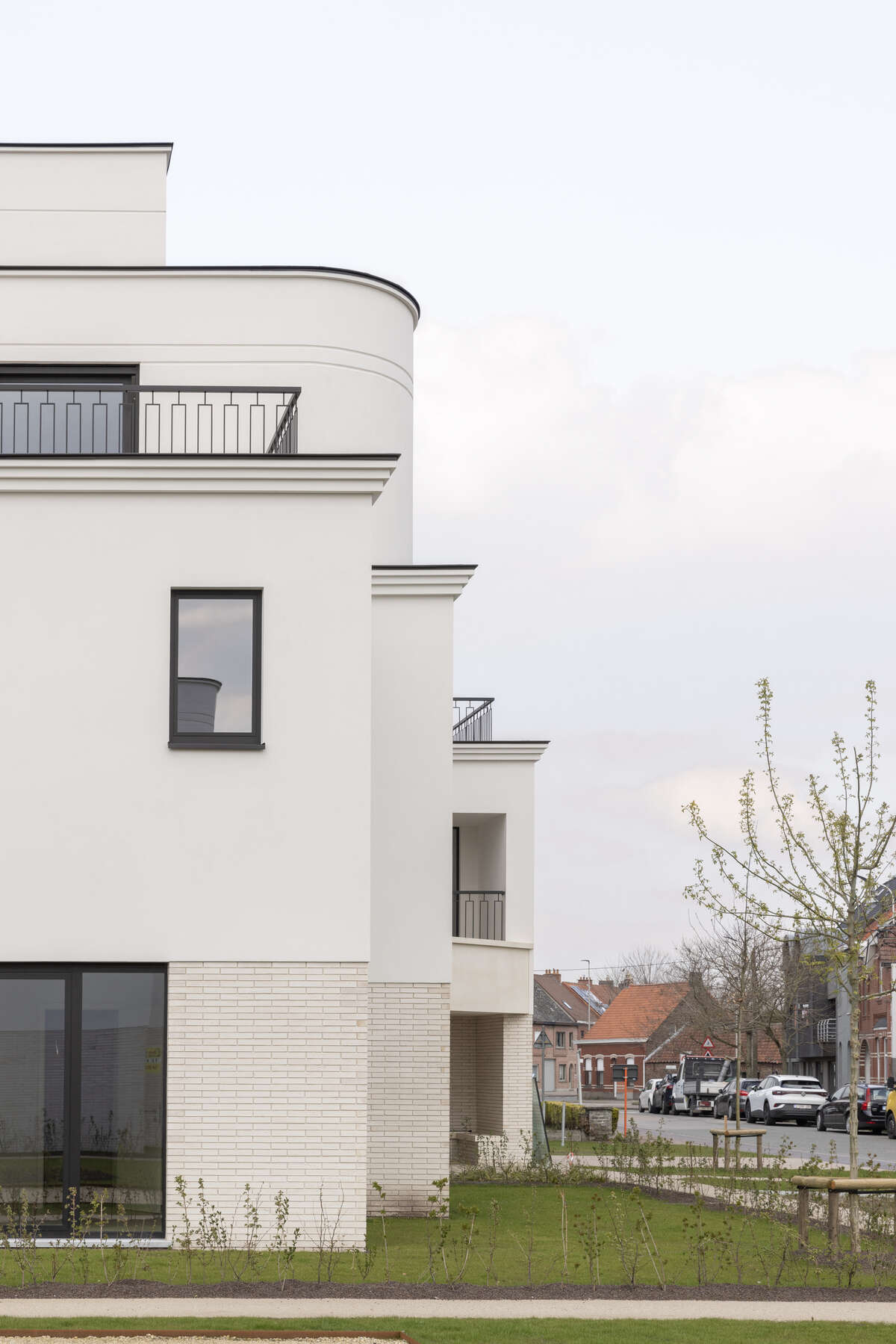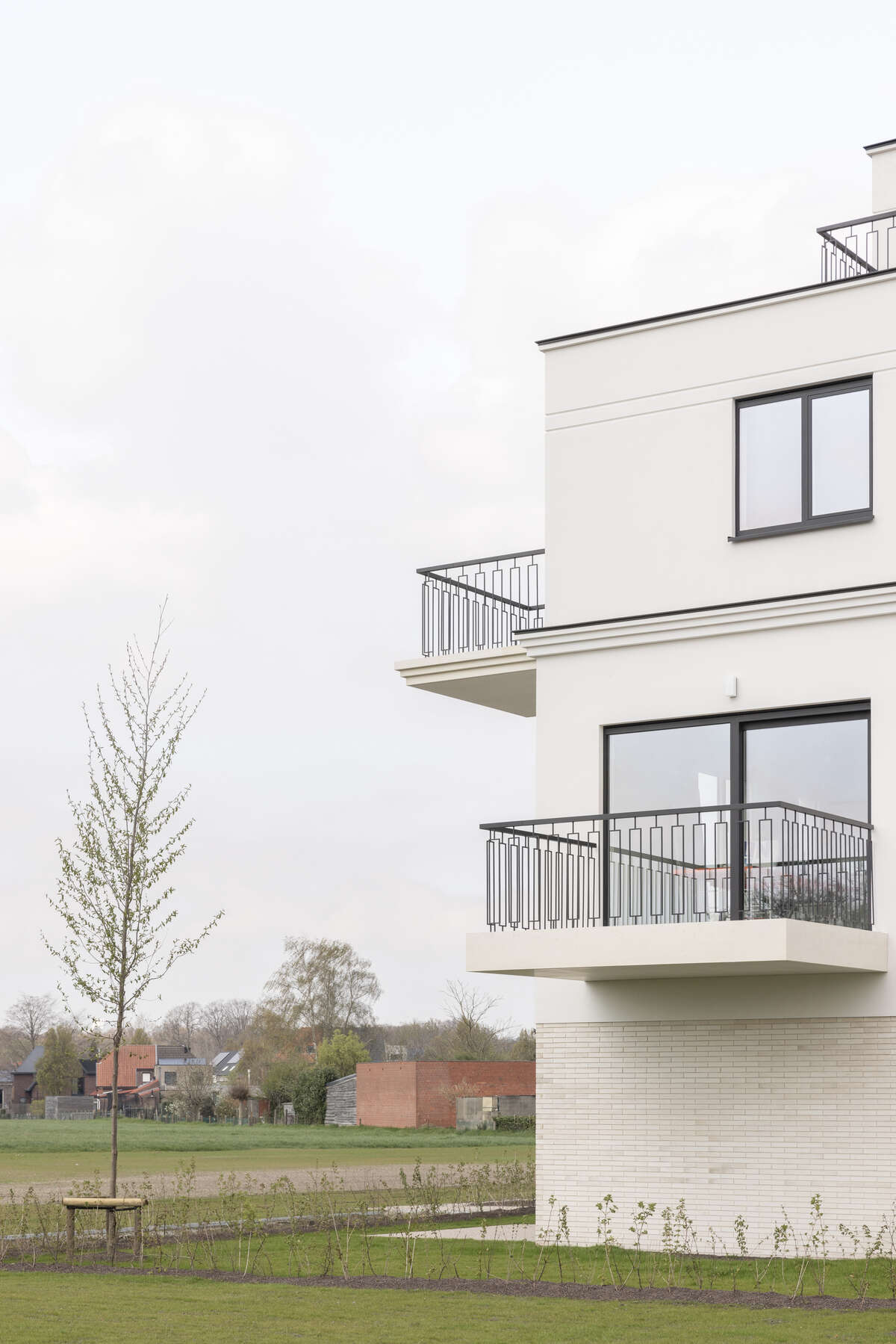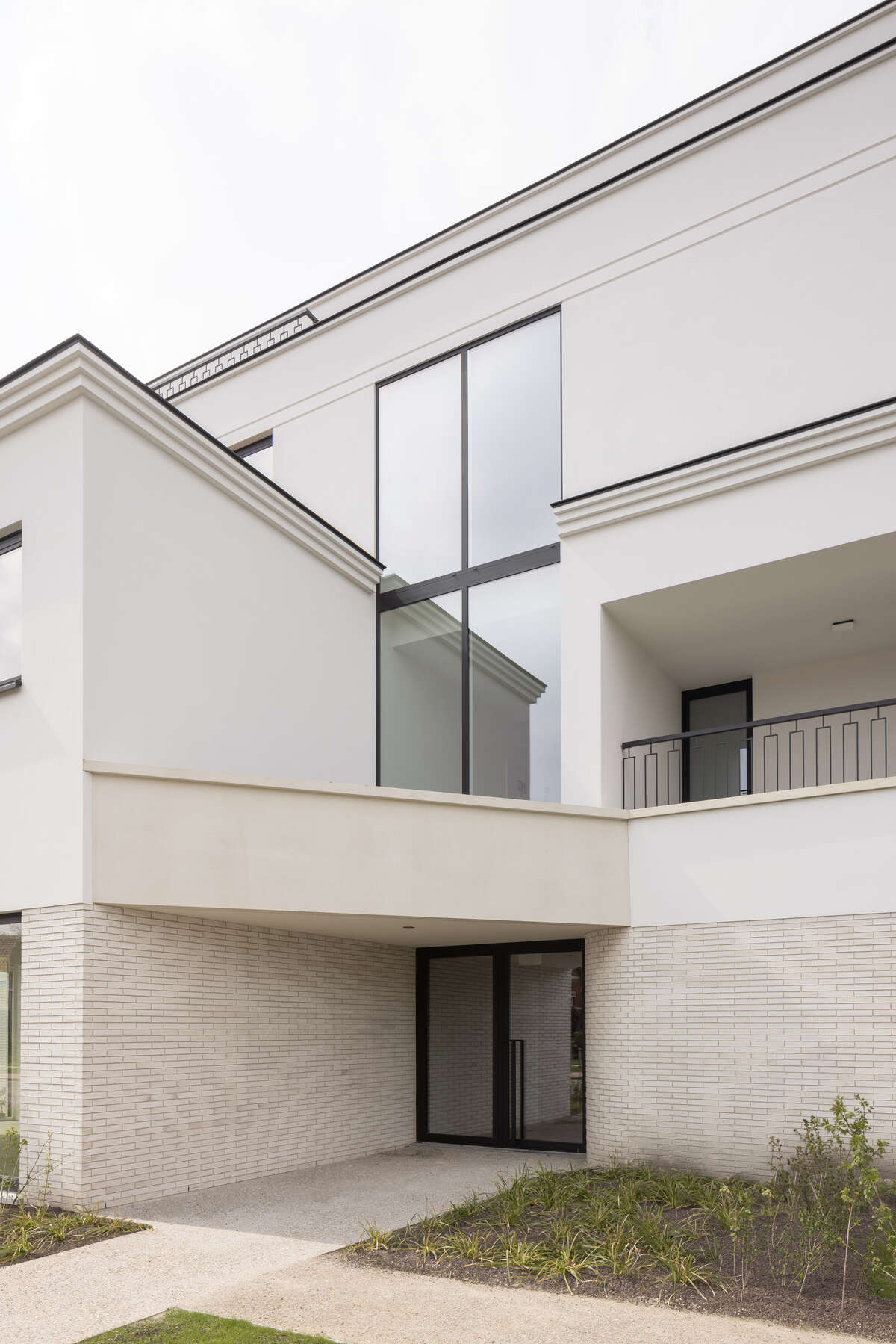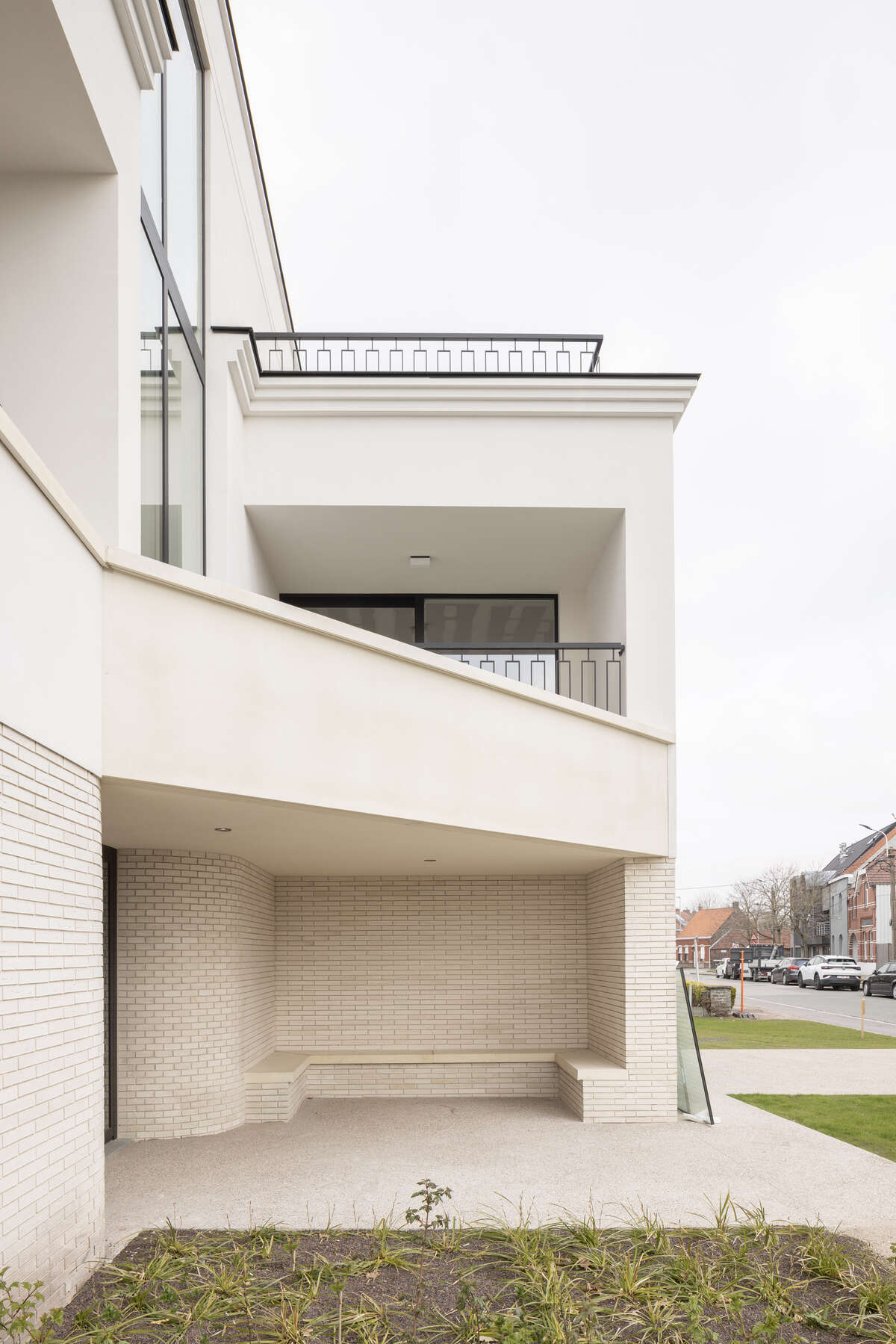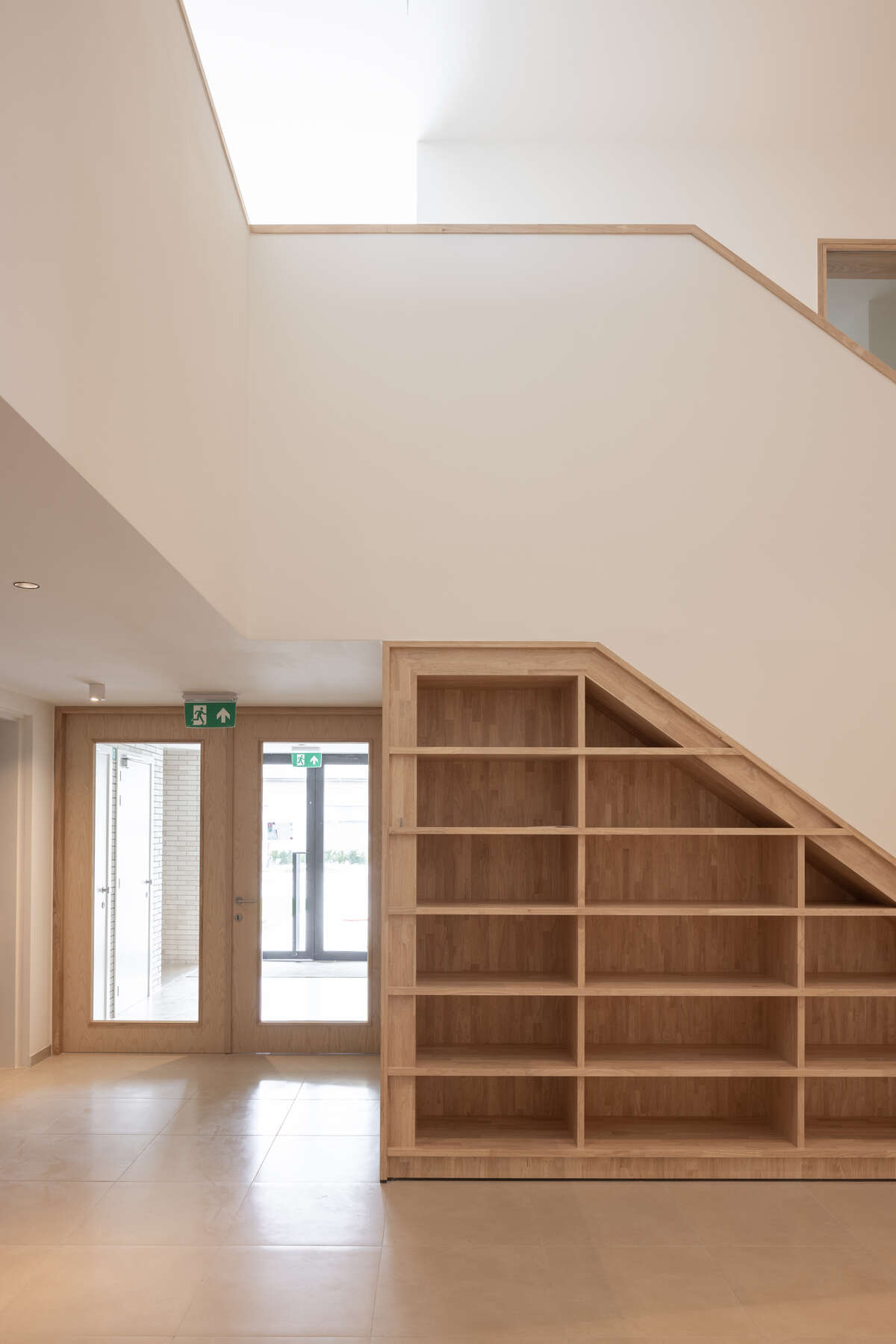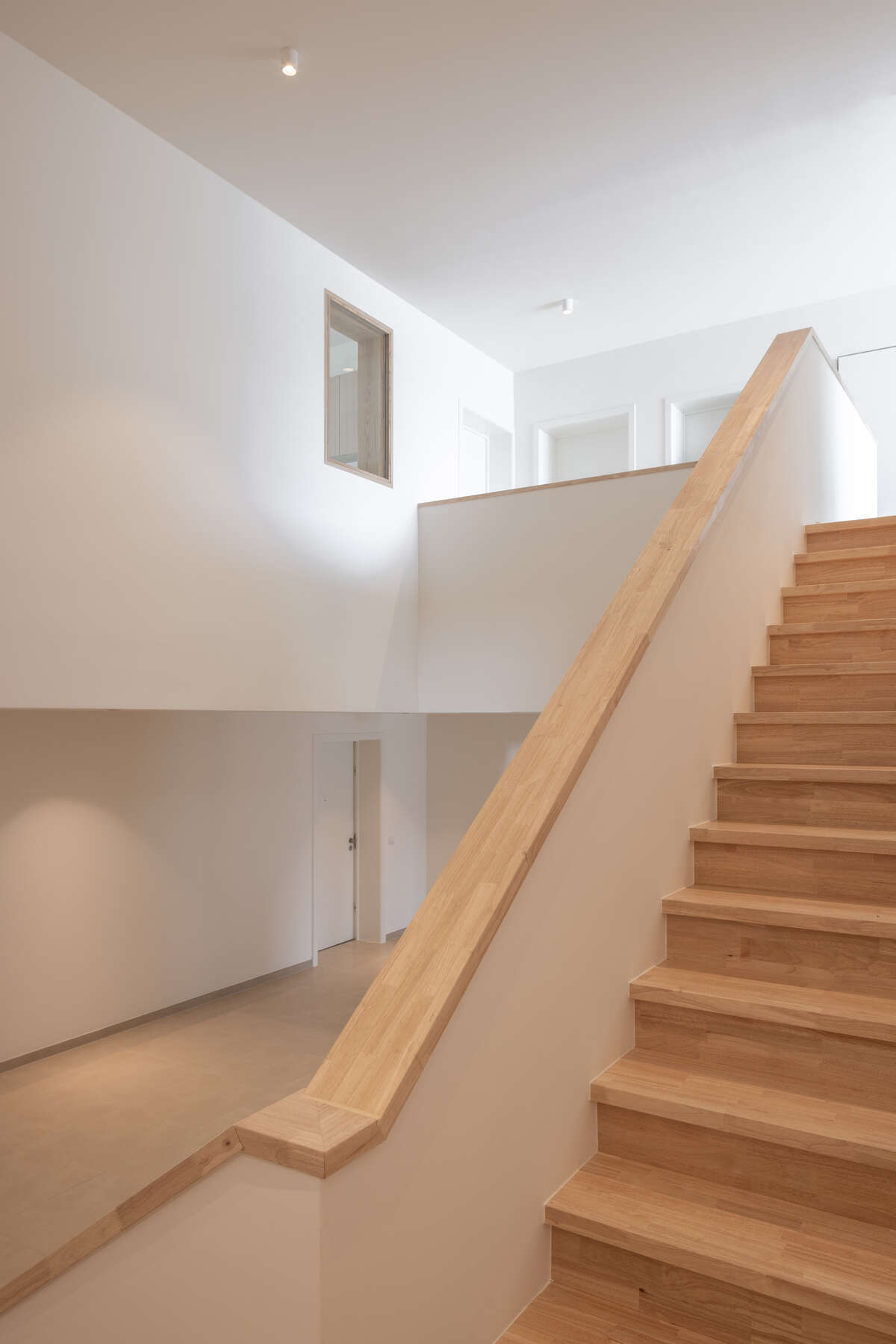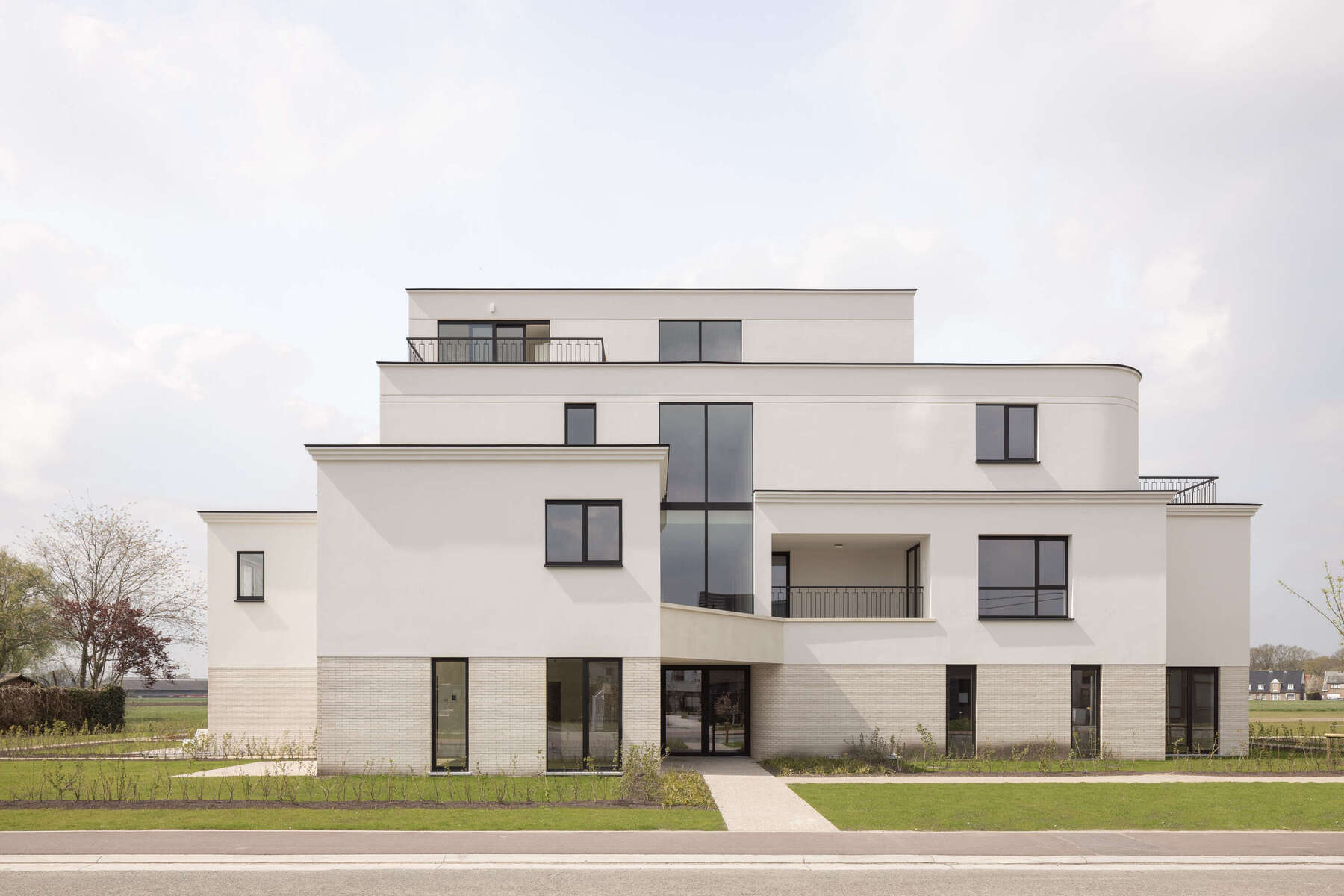
Heerweg
The project comprises 28 residential units, spread over 2 compact building volumes that are situated on both edges of the site. The existing building pattern, flanking the street will be continued on the site, consisting of semi-open houses with front and back garden (STEP 1). The houses are turned sideways, oriented to the front garden (STEP 2). The open space at the back of the houses can be used to organize a few apartments around a communal, covered courtyard (STEP 3). By turning both volumes 90 degrees, the semi-open houses on the ground floor can be provided their own front door. The apartments are accessed via a common entrance at Heerweg Zuid (STEP 4). The entrance hall of both volumes opens up to a common "living room", a meeting space in the middle of both buildings. The "living room" spreads over 2 floors, stimulates interaction and guarantees optimum daylight penetrating the core of the volume (STEP 5).
Organizing all units into 2 compact buildings creates an open space of almost 30 m in the middle of the site, framing an excellent view of the forest area behind. The grid pattern of canals, meadows, rows of trees and hedges surrounding the site, translates into the layout of the plot. A few strategically chosen axes frame 10 laps of greenery, planted with intensive and extensive vegetation. The private gardens, linked to the duplex houses, connect seamlessly to the common outdoor spaces (STEP 6). The result is a project that seeks to reconcile the typology of the country house with that of the multi-family home in various ways. Instead of stacking identical storeys, both volumes can be read as scaled up villas. The common interior spaces have the same ambition. The grand wooden staircase gracefully curves around the mezzanine, visually extending into the wooden plinth that lines the spacious corridors. The entrance doors feature a simple frame, with a design that echoes in the balustrades of both indoor and outdoor terraces.
